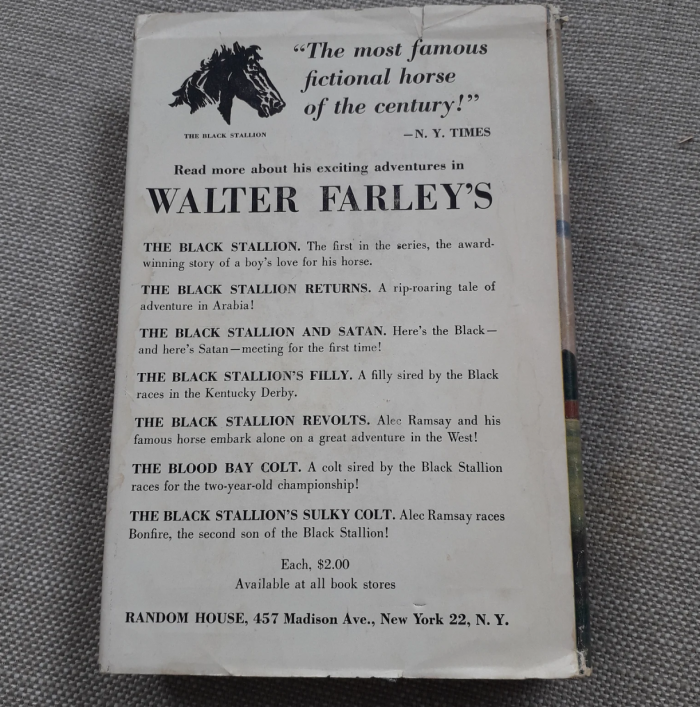The Kentucky Derby is considered the most prestigious horse race in the world.
The race is one and quarter miles long, lasts approximately two minutes, and takes place at Churchill Downs in Louisville, Kentucky. Kentucky Derby attendance ranks first in North America, usually surpassing all other stakes races including the Preakness Stakes, Belmont Stakes and the Breeders’ Cup. It’s also one of the most highly watched sporting events on television: people tune in from all over the world to watch the beauty and splendor of thoroughbred horses.
But behind all of the pageantry and tradition lies a deep, dark secret the public is not privy to. That secret is the intense cruelty and abuse that horses are subjected to because they are regarded as little more than income-generating property.
Breeding is not a pretty picture. A thoroughbred mare will be kept pregnant 90 percent of her life. To make sure insemination is successful, the industry uses various practices that would amount to rape if they were performed on a human female.
Only four weeks after a mare has given birth, she will be impregnated again. Horses would naturally give birth in the mild Summer months, but in Australia, artificial lighting and drugs are used so that foals are born as close to August 1 as possible – their winter. This allows the most time for training before racing season. Australian breeders produce the second highest amount of thoroughbred foals in the world, but most are discarded due to injury, birth defects or lack of racing promise.
However, thoroughbred breeding stats showed a decline in 2009. The number of stallions bred dropped almost 9 percent, and the number of mares bred fell 13.5 percent, according to The Jockey Club. Before we cheer, the numbers of horses bred are still staggering. This year alone more than 45,000 mares were “covered” (bred), which means that tens of thousands of foals will be born into the racing industry and, if successful, will suffer broken bones, stress, loneliness, drugs, abandonment, neglect, and slaughtered when they are no longer considered “useful.”
Thoroughbred horses are bred specifically to race. Because of selective breeding they have many genetic problems that are exacerbated by hard track surfaces, year-round racing schedules, and owners who race them too frequently in an effort to make more money. They weigh at least 1000 pounds yet their bodies are supported by ankles the size of a human’s, and they’re forced to run around dirt tracks at speeds of more than 30 miles per hour – all while carrying people on their backs, being yelled at and whipped.
Training is rigorous and takes a huge toll on horses. They are fed highly concentrated diets rather than grazing as they would normally. This is done to give them the energy to be able to train for many hours. The problem with this diet is that it causes health problems, such as painful gastric ulcers. Studies have shown that horses can develop bleeding ulcers within eight weeks of starting training.
Horses are highly social, and have strong instincts to be part of a herd, yet when not racing or training, racehorses spend all their time confined in stables. Being stabled separately, many develop neurotic behaviors such as wind sucking, self mutilation and head weaving, very similar to animals confined in cages, zoos, factory farms and circuses.
Racehorses travel from state to state, and racetrack to racetrack, in cramped and less than ideal conditions. Only a select few will run in the popular, well publicized races; the majority are instead trucked, shipped, or flown to the thousands of other races that take place all over the country every year. A travel schedule like this causes immense stress for the horses.
Drugs play a large role in the horse racing industry and are administered (illegally) to increase performance, cover up pain and increase recovery time. Some insiders have revealed that horses can be injected with various drugs 25 to 30 times in the week leading up to a race. Any time a horse is not racing it cuts into profits, so trainers and even veterinarians commonly give painkillers and anti-inflammatory drugs to mask fatigue and give horses a temporary burst of strength. Just as they do on a human body, drugs take a physical toll and create addiction and dependency. Among legal drugs, horses are given Lasix to control bleeding in the lungs, phenylbutazone, an anti-inflammatory, and cortiscosteroids for pain and inflammation. Often these legal substances have performance-enhancing effects, since they can mask pain or make a horse run faster. Compounding the problem, labs cannot detect all the illegal drugs out there, and which drugs are legal varies from state to state, with Kentucky holding the reputation as the most lenient state.
Rick Dutrow, the trainer of 2008 Kentucky Derby and Preakness winner Big Brown, openly admits to giving his horses Winstrol, a steroid that is illegal for equine use in ten states, although not in the three that host the Triple Crown. Before it was banned in Pennsylvania, nearly 1000 horses were tested for steroids and more than 60 percent tested positive.
Racing itself is extremely stressful on horses. They begin racing as juveniles, when their delicate skeletal structure is not yet developed enough to cope with the strain. In this period they often break legs or become lame. 90 percent of racehorses bleed from their lungs, and 50 percent bleed as far up as the windpipe due to the rigors of excessive training and racing. Proper veterinary treatment of injured horses is costly, which reduces profits, and a horse who can no longer race is a burden. If a horse is not shot on the spot (while being shielded from the crowds), it will likely be euthanized in order to save the owners further veterinary fees and other expenses.
At times bones will explode, making repair almost impossible. Strained tendons or hairline fractures can be tough for veterinarians to diagnose, and the damage may go from minor to irreversible in the next race or workout. Horses do not handle surgery well. They tend to be disoriented coming out of anesthesia, and they may be stubborn about a cast or slings, possibly causing themselves further injury.
A 1992 University of Minnesota study on injuries at racetracks concluded that one horse in every 22 races suffered an injury that prevented him or her from finishing a race, while another estimates that 800 thoroughbreds die each year in North America because of racing injuries.
At the Kentucky Derby in 2008, Eight Belles had a horrific fall (see video below) and was euthanized on the track – on live television. Although it seemed shocking to the public, this was not a fluke: on average, three horses break down on racetracks in this country every single day. That adds up to at least 2000 racehorses dead on tracks since Eight Belles collapsed two years ago. Racehorse fatalities in the U.S. have occurred at the rate of 1.47 per 1000 starts for synthetic surfaces, and 2.03 per 1000 starts for dirt tracks, according to Mary Scollay, equine medical director for the Kentucky Horse Racing Commission.
What happens to retired racehorses? Few racehorses are ever retired to pastures, because owners don’t want to pay for a horse who doesn’t bring in any money. Care for a single racehorse can cost as much as $50,000 per year, and only the top winners are kept for breeding.
Whether stallion or mare, champion or also-ran, racehorses will be discarded to sales yards and slaughterhouses after their most productive and profitable days are over. It’s not widely known that most retired racehorses end up in slaughterhouses. Worldwide, millions of horses are sent to slaughter and used for glue, pet food and fertilizer. Although there are currently no equine slaughterhouses in the U.S., there is still a multimillion-dollar horsemeat export industry that sends tens of thousands of horses every year to Canada, Mexico, and Japan for slaughter. Their flesh is also exported to countries like France and Japan, where it is considered a delicacy: approximately 3500 tons of horsemeat is exported for human consumption in Japan and Europe per year.
Most U.S. horses are slaughtered in Mexico and Canada; more than 100,000 U.S. horses per year, and more than 10,000 of those horses are thoroughbreds formerly used for racing. One Colorado State University study found that of 1,348 horses sent to slaughter, 58 were known to be former racehorses. As many as 20,000 horses were slaughtered in Japan in 2008 alone, partly due to overbreeding of thoroughbreds in the U.S.
Horses who are sent to slaughter endure days of transport in cramped trailers exposed to extreme temperatures. Usually there is no access to water or food, and injuries are common: a University of California, Davis, study of 306 horses destined for slaughter found that 60 of them sustained injuries during transport. While veterinarians recommend that horses be offloaded for food and water every four hours while traveling, the U.S. Department of Agriculture allows horses to be shipped for 28 hours without a break. Regardless of this regulation, transport is not well monitored.
In slaughterhouses horses are often killed in front of all the others, and death is not always instant. Horses are subjected to the same method of slaughter as cows – a pneumatic gun to the head that is supposed to render them unconscious before their throats are cut. However since horses are generally unaccustomed to being herded, they tend to thrash around in order to avoid the bolt gun. Like cows, when the bolt gun is unsuccessful, they move down the slaughter line fully cognizant, fighting for their lives, and no doubt in excruciating pain.
Even profitable “celebrity” horses end up in slaughterhouses. Kentucky Derby winner Ferdinand was sold to a Japanese breeder and a few years later, he was slaughtered. A PETA investigation discovered that Derby and Preakness winners Charismatic and War Emblem are at breeding farms in Japan right now. They too may end up in a slaughterhouse as their usefulness to breeders comes to an end.
The use of animals for sport is an ugly business where cruelty and suffering is standard operating procedure. Do horses love to run? No doubt many of them do like to run and play, but probably do not love being whipped, drugged, confined, force-bred and either shot for breaking a fragile bone or brutally killed in a bloody, stinking slaughterhouse. Unfortunately when you watch a sporting event like the Kentucky Derby, bet on a race, or visit a local track, these are the industry practices you support. It’s time to let this American tradition move on to greener pastures.
http://www.youtube.com/watch?v=PM53ovyySTE&feature=relatedGary Smith is co-founder of Evolotus, a PR agency working for a better world. Evolotus specializes in health and wellness, spirituality, animal protection, natural foods, documentary films, non-profits and socially beneficial companies. Gary and his wife adhere to a vegan lifestyle and live with their cat Chloe, in Sherman Oaks, CA.











Read 25 comments and reply